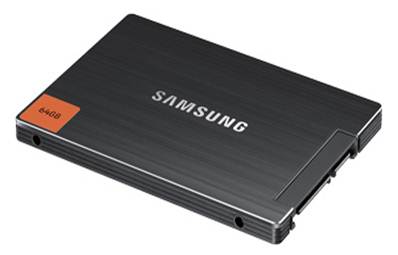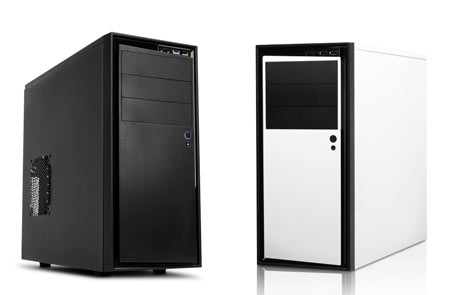Fall Budget System Buyer's Guide
by Zach Throckmorton on September 1, 2012 12:00 AM ESTDevelopments in the Budget Marketplace
Since our last budget buyer's guide back in November 2011, there have been many developments in the budget sector of the DIY market. Perhaps most noteworthy, SSD costs have finally fallen far enough that they are within reach of price-conscious builders. Given that mechanical hard drive prices remain inflated in the wake of last year's flooding in Thailand, I have been putting lower capacity SSDs in budget builds more frequently than HDDs in the last few months.
That said, it's worth elaborating that while you might have become used to larger capacity hard drives in the last few years, a 60/64GB SSD is more than enough space for a basic machine that will have Windows 7, Office, and a few other productivity applications installed on it and not be used for personal storage. Even a 40GB SSD can comfortably contain Windows 7, Office, and many small applications. Of course, the small size of SSDs might very well preclude their inclusion in your system if you need more space—know what your storage needs will be. Thus, in the office builds, we include both SSD and HDD options. Gamers will likely want to stick with larger HDDs because a gaming library will quickly surpass the capacities of less expensive SSDs.
space for a basic machine that will have Windows 7, Office, and a few other productivity applications installed on it and not be used for personal storage. Even a 40GB SSD can comfortably contain Windows 7, Office, and many small applications. Of course, the small size of SSDs might very well preclude their inclusion in your system if you need more space—know what your storage needs will be. Thus, in the office builds, we include both SSD and HDD options. Gamers will likely want to stick with larger HDDs because a gaming library will quickly surpass the capacities of less expensive SSDs.
Also of note is the disappearance of AMD's lower-end Athlon II CPUs from retail channels. I probably built more computers with the AMD Athlon II X2 250 than every other CPU model combined from 2009 to earlier this year. That chip and its close relatives are now rarely available from retailers, and that limits budget processor choices. In the previous budget buyer's guide, I compared the Athlon II X2 250 with the then newcomer Intel Celeron G530, a super-cheap chip based on the Sandy Bridge microarchitecture. The G530 has become the king of the budget CPUs. While AMD's Llano APUs offer acceptable computing, for CPU-centric tasks—that is, non-gaming—the G530 remains a better choice than the comparably priced lower-end Llanos. Since most home and office users aren't playing games, I've built more and more G530 systems as X2 250s have become harder to find. However, the higher-end Llano APUs offer a very good value for gamers on a very tight budget.

There are also a few new budget cases that have caught our attention here at AnandTech in 2012 that we'll highlight in the guide. NZXT's Source 210 case is a capacious offering that's easy to work in, offers attractive, subdued lines, and is well-built; its 'elite' brother is one of the least expensive cases with front panel USB 3.0 support. Dustin recently reviewed the Cooler Master Elite 120, an inexpensive ITX case that I just got my own hands on that has impressed me.
Finally, new video cards—as well as old video cards with new prices—put more gaming power in the hands of budget gamers than ever before. Those are covered on the gaming build page. First, though, we'll start with the basic office productivity builds on the next page.










39 Comments
View All Comments
mevans336 - Saturday, September 1, 2012 - link
I bet you couldn't tell the difference unless you used a benchmark util.popej - Saturday, September 1, 2012 - link
Probably not, but even Windows Experience Index will drop significantly because of lack of bandwidth for integrated GPU.Even if I couldn't show more advantages of dual channel memory for office PC, I would feel uncomfortable building such an handicapped system ;)
mosu - Saturday, September 1, 2012 - link
I've noticed that too.Also I would recommend a faster memory packgoinginstyle - Saturday, September 1, 2012 - link
For $5 more you can get the Asus F1A55-M LE board. What does that $5 buy you? Another x4 PCIe slot, 2 additional SATA ports, 4 more USB ports, additional fan header, and a true UEFI and not the Hybrid EFI crap on the Gigabyte board. Oh yes, also much better audio and network controllers and the software suite (options, fan controls, etc) is greatly improved on the Asus board. I understand this is budget but another $5 for that trade-off seems like an easy choice.SunLord - Sunday, September 2, 2012 - link
I'd get the ASRock A55M-HVS personally as it at least has an HDMI connector and it's only $60 with shipping but really if I'm gonna lock myself into a dead socket I'm gonna just save a little more and get a board with USB 3.0 and SATA 6 Gbit/s so I have some future proofing in other areasJoe Miller - Saturday, September 1, 2012 - link
Very good read. It is very well balanced. I liked it a lot - all the issues with selections and compromises to do are laid out well.I feel like now it is more difficult than ever to make a budget build - AMD is weaker, Trinity is expected soon, but the socket is changed, Core i3s are relatively expensive, hard drive prices are higher, while SSDs are still more expensive than I am willing to pay, and I am still afraid of reliability and need larger capacity for dual boots, and so on :)
There is also a problem with availability of mini-ITX cases where I live. Delivery from US is like 70$, so not an option.
Torrijos - Saturday, September 1, 2012 - link
The thing with AMD CPU on gaming machine is they might have more influence than previously sought on gaming performance...This article shows that there are more slowdown with AMD CPU than with Intel
http://techreport.com/articles.x/23246/4
Z Throckmorton - Saturday, September 1, 2012 - link
Hi Joe - Thanks for the kind words. I agree that AMD's retreat (though not total withdrawal) from the budget market is a bummer for consumers. That said, the fact that the G530 is as powerful as it is and so dirt cheap helps to mitigate the drawback of less competition. ...For now. I worry that this situation will not persist much longer. Anyway, I hope that Trinity will bring better CPU-centric performance to the low-end APU line, which would bring AMD closer to parity in the cheap CPU segment. As for your concerns about SSD reliability - there are many SSD models that I personally trust as much as any mechanical HDD. So do your research, take a deep breath, and jump in. (Of course, the lower capacities are an issue for multi-OS booting and such, but that will become less of an issue with time.) Where do you live? AnandTech's General Hardware forum is filled with non-US users who might be able to point you to ITX case resellers in your country if you post there. Hope this helps - Zachbill4 - Saturday, September 1, 2012 - link
I'd argue the number one reason costs are higher is cause Intel has no competition. $220 for the sweet spot quad core Intel's sticks out like a sore thumb. Used to be able to pick up some perfectly fine AMD chip or other for like 100, and maybe 60 on the mobo. No more.It's sad all the AMD haters online who so desperately want them to go out of business vs Nvidia, this is what you're going to get...
JarredWalton - Sunday, September 2, 2012 - link
You can still find plenty of AMD CPUs/APUs for $100, but they're not compelling compared to Intel's offerings. The quad-core Llano stuff is a case of win some, lose some against even a low-end Core i3-2100, never mind newer Intel CPUs like the i3-3220. Heck, even the Pentium G2120 would likely give it a run for the money. Still, if all you want is an inexpensive PC, there's nothing wrong with Llano's performance for general use -- or Athlon X2 or Core 2 Duo for that matter. You can find some pretty inexpensive motherboard as well if you shop around.